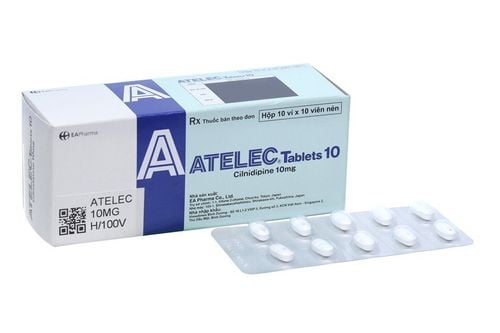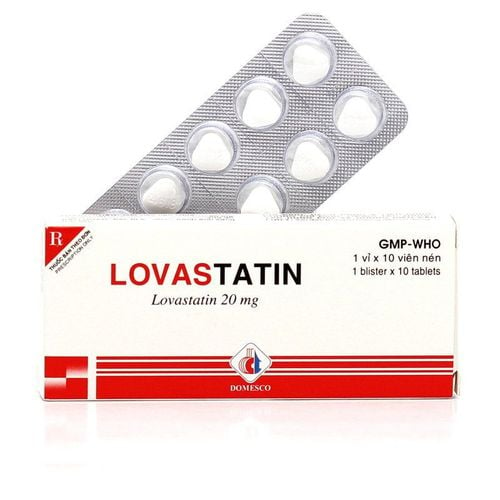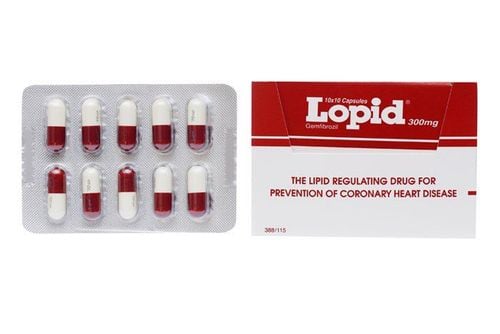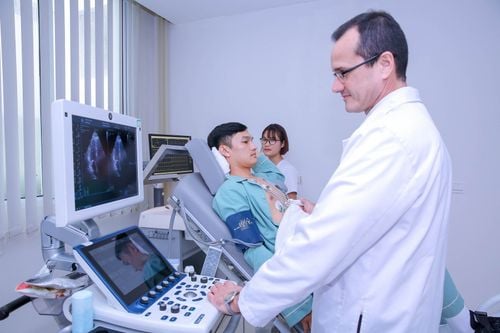This is an automatically translated article.
The drug simvastatin, a class of drugs called statins, works to lower blood cholesterol levels. When excess cholesterol builds up in the walls of blood vessels, this increases your chances of having a heart attack or stroke. Simvastatin, when taken into the body, blocks an enzyme that produces cholesterol in the liver and slows down the production of cholesterol in the body.1. Uses and indications of simvastatin
Treatment with lipid-altering agents as a component of a multifactorial intervention in individuals is at significantly increased risk for atherosclerotic vascular disease due to hypercholesterolemia. Drug therapy is indicated as an adjunct to diet when dietary restriction of saturated fat and cholesterol and other non-pharmacological measures alone are not sufficient. In patients with coronary artery disease or at high risk of acquiring it, simvastatin can be initiated concomitantly with diet.Drugs help reduce the risk of death from atherosclerotic cardiovascular disease and cardiovascular events. In patients at high risk of coronary events due to existing cardiovascular disease, diabetes, peripheral vascular disease, history of stroke or other cerebrovascular disease, simvastatin is indicated to:
Reduce the risk overall mortality by reducing atherosclerotic cardiovascular disease mortality. Reduced risk of heart attack and non-fatal stroke. Reduced need for coronary revascularization procedures. Increased blood lipids. Simvastatin is used to:
Reduce elevated levels of total cholesterol, low molecular weight cholesterol (LDL-C), apolipoprotein B (ApoB) and triglycerides ; concomitantly increases high-molecular-weight cholesterol (HDL-C) in patients with primary hyperlipidemia or mixed dyslipidemia. Reducing triglycerides in patients with hypertriglyceridemia. Reduction of triglycerides and very low molecular weight cholesterol (VLDL-C) in patients with primary dysproteinemia. Reduction of total cholesterol and LDL-C in patients with homozygous familial hypercholesterolemia as an adjunct to other lipid-lowering treatments or if such treatments are not available . In adolescent patients with heterozygous familial hypercholesterolemia, simvastatin is indicated as an adjunct to diet to reduce total cholesterol, LDL-C and ApoB levels.
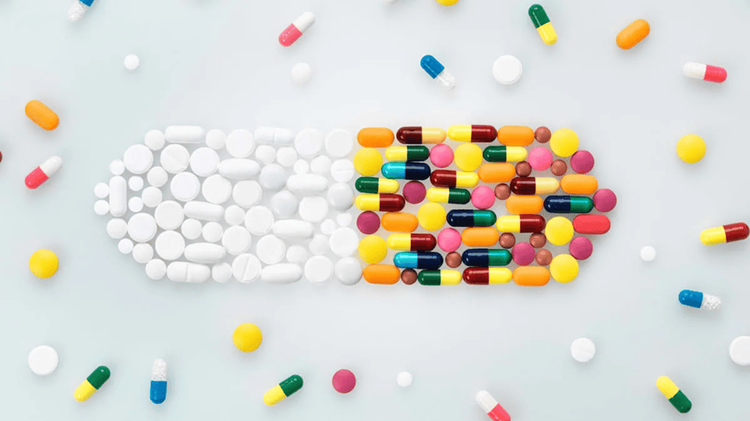
Thuốc giúp giảm nguy cơ tử vong do bệnh tim mạch do xơ vữa và các biến cố tim mạch
2. Dosage and usage of simvastatin
The usual dose of simvastatin is 20 to 40 milligrams once a day, at the same time each day.Always take simvastatin at the dose prescribed by your doctor, with or without food. For effective cholesterol reduction, daily simvastatin must be maintained. If you miss a dose, take it as soon as you remember that day. However, if it is almost time for the next dose, just take the next dose at the right time. Do not double the dose.
3. Precautions while taking simvastatin
3.1 Before starting simvastatin If you have liver or kidney problems, thyroid problems, diabetes, are trying to get pregnant or think you may be pregnant or breastfeeding, drink a lot of alcohol, have had or if you have a muscle disorder, etc., tell your doctor or pharmacist before you start taking it. Sometimes a medicine is not suitable for people with certain conditions or can only be used with the caution your doctor or pharmacist will tell you. 3.2 While taking simvastatin Eating a lot of grapefruit while taking simvastatin may increase the risk of side effects. However, eating no more than half a grapefruit or drinking no more than one glass (250ml) of grapefruit juice per day should not be a problem if you are taking a statin. Periodic follow-up visits to your doctor and regular blood lipid testing are required when starting simvastatin to ensure the right dose. To get the full benefits of statins, it's important to keep a healthy diet and exercise regularly. Limit alcohol intake while taking simvastatin. Drinking a lot of alcohol can increase your risk of serious side effects.
Bạn cần tái khám định kỳ để đảm bảo liều lượng thuốc phù hợp với tình trạng bệnh
Muscle pain or weakness: Some people experience muscle pain or weakness when taking statins. This is rarely serious and usually goes away with time. If the pain comes on soon after starting a statin or gets worse, see your doctor. Your doctor will test for an enzyme called creatine kinase to see if the aches and pains could be caused or worsened by a statin.
If so: a lower dose or another statin may be prescribed, or you may choose to continue living with the pain because of the benefits of the statin, or you may be able to discuss stopping the statin with your doctor . Your doctor will also want to check for a rare but serious condition called rhabdomyolysis and will check for any other medications you're taking. Rhabdomyolysis can be caused by interactions between statins and certain other medications, including antibiotics.
Increased risk of type 2 diabetes: There is a small chance that statins may increase the risk of type 2 diabetes. However, people at risk for diabetes should take a statin if necessary to help lower cholesterol.
This is because the overall health benefits of taking statins and preventing a heart attack or stroke are considered to outweigh the problems caused by diabetes.
Other side effects:
Diarrhea. Stomach pain. Flatulence. Nausea, feeling nauseous. Dry cough. Sudden weight loss. Smoldering fever. Liver problems such as dark urine, yellowing of the skin or eyes, sharp pain in the stomach area. Signs of an allergic reaction, such as itchy skin and rash.

Một số người có thể gặp phản ứng dị ứng như ngứa da và phát ban khi sử dụng thuốc
4. Drug interactions with simvastatin
Possible drug interactions when used with simvastatin, including cardiovascular drugs:Strong CYP3A4 inhibitors: Simvastatin, like some other HMG-CoA reductase inhibitors, is a background of CYP3A4. Simvastatin is metabolised by CYP3A4 but has no inhibitory activity to CYP3A4; therefore it is not expected to affect the plasma concentrations of other drugs metabolised by CYP3A4. High plasma concentrations of HMG-CoA reductase inhibitory activity increase the risk of myopathy and rhabdomyolysis, particularly at higher doses of simvastatin. Therefore, concurrent use of drugs that are also potent inhibitors of CYP3A4 is contraindicated. However, if treatment with itraconazole, ketoconazole, posaconazole, voriconazole, erythromycin, clarithromycin or telithromycin cannot be avoided, treatment with simvastatin must be temporarily discontinued during treatment. Cyclosporine or Danazol: The risk of myopathy, including rhabdomyolysis, is increased with concomitant use of cyclosporine or danazol. Therefore, concomitant use of these drugs is contraindicated. Other lipid-lowering drugs can also cause myopathy when taken alone, eg gemfibrozil. Amiodarone, Dronedarone, Ranolazine, or calcium channel blockers: The risk of myopathy, including rhabdomyolysis, is increased with concomitant use of amiodarone, dronedarone, ranolazine, or calcium channel blockers such as verapamil, diltiazem, or amlodipine. Niacin: Cases of myopathy/rhabdomyolysis have been reported with concomitant use of simvastatin with products containing niacin. Digoxin: In one study, co-administration of digoxin with simvastatin resulted in a slight increase in plasma digoxin concentrations. Patients taking digoxin should be appropriately monitored when initiating simvastatin. Coumarin Anticoagulants: Prothrombin time should be determined before initiating simvastatin and regularly during treatment to ensure that no significant change in prothrombin time occurs. Once steady-state prothrombin time has been recorded, prothrombin time can be monitored at intervals normally recommended for patients taking coumarin anticoagulants. If the dose of simvastatin is changed or discontinued, the same procedure should be repeated. Simvastatin therapy was not associated with bleeding or changes in prothrombin time in patients not receiving anticoagulants. Colchicine: Cases of myopathy, including rhabdomyolysis, have been reported with the co-administration of simvastatin with colchicine, and caution should be exercised when simvastatin is prescribed with colchicine. In summary, because lowering cholesterol reduces the risk of heart and blood vessel disease, the use of simvastatin, or statins in general, is a fundamental component in the treatment of atherosclerotic cardiovascular diseases. Because of the long-term benefits, regular use of simvastatin requires a combination of a healthy diet and exercise to achieve optimal results.
Please dial HOTLINE for more information or register for an appointment HERE. Download MyVinmec app to make appointments faster and to manage your bookings easily.
References: healthnavigator.org.nz, rxlist.com, webmd.com



